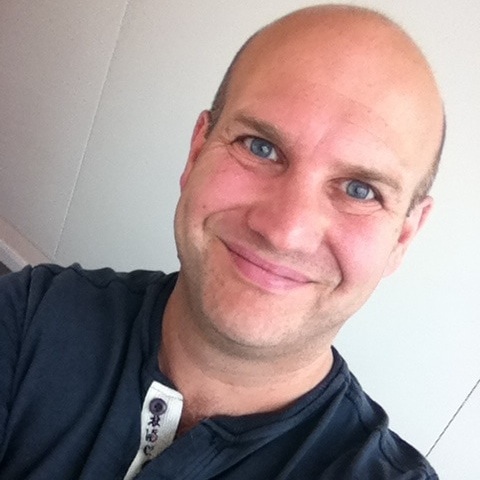By now most of you will have heard of transcranial direct current stimulation (tDCS). It’s been all over the media in recent years and original research has been flooding through the neuroscience and clinical journals. In a nutshell it involves the non-invasive delivery of low intensity direct current applied to the brain via electrodes that are secured to the scalp. This stimulation temporarily alters levels of cortical excitability and so it follows that it might affect many of the outputs of brain activity. We’ve discussed it before here.
Barely a week goes by without a new trial or study with an excitable press release claiming, for example, that tDCS (or in the technically unconcerned, veracity-free parlance of the press a “zap”, “shock”, “jump-start” , “mild jolt” or “electrical thinking cap”) improves academic performance, mathematic ability, craving, chronic pain, depression, anxiety, addiction, gambling ability. Indeed my recent favourite press-story is that the US military are interested in its capacity to create the apocryphal “super soldier” (lest anyone take that as a potentially convincing argument from authority in favour of tDCS, I direct you to Jon Ronson’s very funny book “The men who stare at goats” for some context). More worryingly perhaps, companies, unfettered by anything approaching meaningful regulation have started producing DIY brain stimulation kits, for example to improve your performance at “gaming”.
In recent months two short review papers have addressed the rising profile of tDCS in the public consciousness and the research field and both make related arguments that, in my view, need to be taken very seriously by anyone reading about tDCS in the press and more importantly, anyone engaged in tDCS research.
Veljko Dubljević and colleagues in this months “Neuron” show the surge over the last 7 years in both academic articles and media reports. Unsurprisingly they found a substantial mismatch between the media coverage and the original papers, with the former frequently containing what they describe as misleading statements such as “schoolchildren who struggle to grasp mathematics could benefit from having their brains roused with electricity”. They suggest that there is a need for researchers and professional societies to promote a more nuanced and cautious message about tDCS and to better reflect the uncertainty and limitations of our current knowledge, and that steps might need to be taken to regulate tDCS devices.
A few months ago Prof Vincent Walsh of University College London published a lively commentary in the journal Brain Stimulation touching on many of the same issues. Prof Walsh is also clearly concerned about hype and brain stimulation but lays the blame for this situation firmly at the feet of us researchers. He points out it is researchers who use phrases such as “brain boosting”, who hype our results, and “cross the line between what is scientifically interesting and clinically and recreationally possible”. He also highlights a few uncomfortable facts about tDCS that get a little less airplay. For example effects are usually short-lived, they are often very small, they are hard to replicate often and have a tendency to disappear in the noise of real life. Not characteristics that bode well for powerful real world applications. He suggests that we might more honestly say to people “Based on the best available studies, from reputable laboratories, we don’t really know where to put the electrodes, we don’t know how robust is the idea that the effects are excitatory or inhibitory, we don’t know what other behaviours are affected, we haven’t tested the methods with real-world tasks and therefore don’t know how they perform outside the lab, and we have no idea in healthy people if they continue to work after more than 2-3 repeated applications.” Now make me a sexy headline out of that.
Prof Walsh is less concerned with regulation of tDCS, pointing to the apparent safety of well-made devices. He argues that to regulate and “medicalise” tDCS seems unwarranted and that in the end market forces might find tDCS out; that the market won’t continue to invest in brain stimulation if it doesn’t actually work. On that point I personally disagree and would produce one word to counter this argument: Homeopathy. Wrong yet still going strong since 1796.
Both of these papers speak to a real problem that, as someone who has done some research with tDCS, I think we should be genuinely concerned about. Protocols for clinical trials of tDCS are on the rise. The scope of conditions it is being considered for is staggering and in some instances fairly surprising. The claims for the potential of these devices are racing ahead of the evidence and the evidence-base itself has problems. Studies are generally small, often underpowered, regularly poorly controlled, not uncommonly based on loose analyses. None of this means that tDCS does not have potential but the tDCS field needed a reality check and together these papers have attempted to deliver it.
So the next time you read a news story about cognitive enhancement with tDCS, brain boosting or the like, proceed with caution, because at this point nothing is a done deal.
Neil O’Connell
 As well as writing for Body in Mind, Dr Neil O’Connell, (PhD, not MD) is a researcher in the Centre for Research in Rehabilitation, Brunel University, West London, UK. He divides his time between research and training new physiotherapists and previously worked extensively as a musculoskeletal physiotherapist.
As well as writing for Body in Mind, Dr Neil O’Connell, (PhD, not MD) is a researcher in the Centre for Research in Rehabilitation, Brunel University, West London, UK. He divides his time between research and training new physiotherapists and previously worked extensively as a musculoskeletal physiotherapist.
He also tweets! @NeilOConnell
Neil’s main research interests are chronic low back pain and chronic pain more broadly with a focus on evidence based practice. He has conducted numerous systematic reviews including some for the Cochrane Collaboration. He also makes a mean Yorkshire pudding despite being a child of Essex.
Link to Neil’s published research here. Downloadable PDFs here.
References
Dubljević V, Saigle V, Racine E. The Rising Tide of tDCS in the Media and Academic Literature. Neuron. 2014 May 21;82(4):731-6. doi: 10.1016/j.neuron.2014.05.003.
Walsh VQ. Ethics and social risks in brain stimulation. Brain Stimul. 2013;6(5):715-7. doi: 10.1016/j.brs.2013.08.001.



